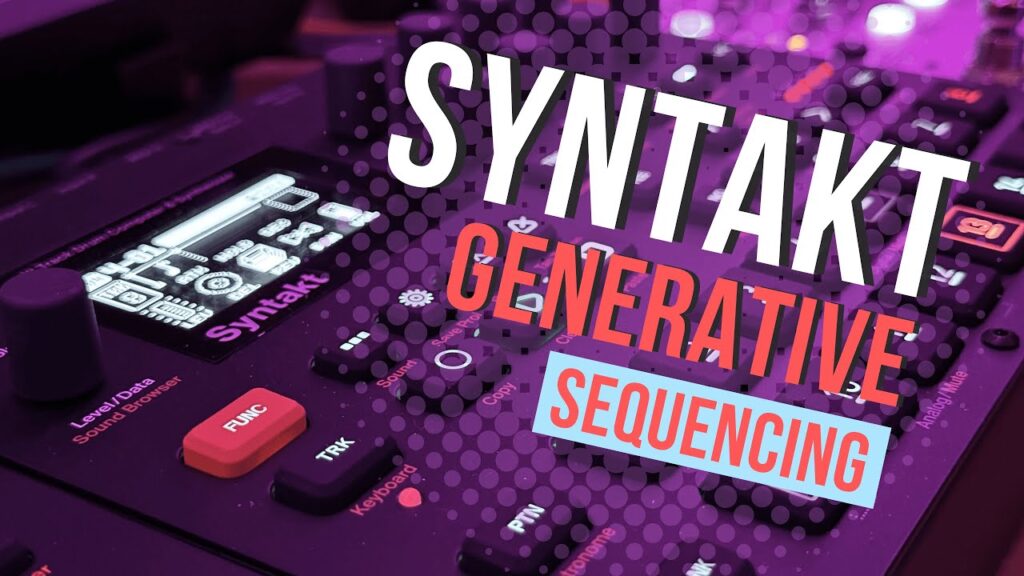Hey everyone, welcome back! Today I want to dive into an exciting technique for crafting entire tracks or songs using just the Elektron Syntakt — and not just any track, but one that can evolve and play continuously without getting boring. This is a follow-up to the tutorial I shared last week, where I introduced the basic template and setup using the Octatrack, Digit, and Syntakt for live improvised techno sets. If you haven’t watched that video yet, I highly recommend checking it out first — I’ll drop the link somewhere here so you can easily jump back and get caught up.
Why This Matters: The Idea Behind the Setup
In a live techno performance, managing multiple devices and creating smooth transitions between songs can get complex fast. The trick I want to share with you is how to dedicate one machine per song — so the Digit plays one track, the Syntakt plays another, and the Octatrack handles transitions and mixing.
This approach means only one device plays at a time for your audience, but behind the scenes, you can prep your next track quietly through your headphones, cue it up, and be ready for a seamless handoff. It’s a workflow designed to make live improvisation easier and keep the vibe flowing for long periods.
Getting Started: Building the Backbone of Your Track
To get started, I’ve already prepared a simple melody line on the Syntakt — nothing fancy, just a basic side chord sound using Sound 6, the init preset. This is our backbone.
Next, to give the track some rhythm and groove, I added a bass drum and hi-hat. Simple elements that set the foundation for the track to come alive.
Adding Movement and Interest with a Second Melody
Now, the fun part begins. On track 7 of the Syntakt, I switched to Sound 7 (another init preset) to create a complementary melody line. But I don’t want a repetitive, boring loop. So, I dove into the keyboard mode to experiment with which notes fit best alongside our existing melody.
I tested notes 9, 3, 12, 13, 7, and 16, listening to how each one interacted with the current pattern.
Introducing Polyrhythms with Polytric Sequencing
Here’s where things get really interesting: the Syntakt supports polytric sequencing. That means you can have different step lengths playing against each other, creating evolving grooves that shift over time.
Our base sequence is 16 steps long, but I set it to use only 13 steps. This means the pattern “shifts” every time it loops, so the groove subtly changes with each repeat. It’s a classic technique for avoiding monotony and adding movement.
I recommend using an odd number of steps like 13, 9, or 11 to maximize this shifting effect. Here, we stick with 13.
Step Mode Jump for Efficient Programming
To place notes quickly in this shifting sequence, I switched to Step Record Jump mode. Holding Record and pressing Stop toggles this mode.
In this mode, when you add a note, the cursor jumps automatically to the next step — making it faster and easier to build out the pattern without manually moving step-by-step. This helps when programming longer, more complex sequences.
Adding Randomness with Trick Probability
Now, here’s the real magic to keep the track from getting stale: Trick Probability.
You can assign a percentage chance that a given step will play when the sequence hits it. For example, setting a step to 19% means it only plays about one in five times, adding variability to the groove.
I experimented by assigning different probabilities to different steps — 19%, 25%, 33% — which generates a dynamic, ever-changing rhythm and melody. The combination of this randomness with the polytric shifting sequence creates a groove that’s constantly evolving and never sounds the same twice.
Enhancing Movement with LFO Modulation
To add even more life, I turned to the LFO (Low-Frequency Oscillator) page. I set an LFO to modulate the filter cutoff frequency of track 7, using a random waveform for unpredictable movement.
With a slow speed and gradual fade-in, this modulation creates subtle tonal shifts over time, adding texture without becoming overwhelming.
For extra depth, I added a second LFO with a different speed and waveform, layering complexity onto the sound.
Adding Percussion with the Ukidian Sequencer
To fill out the track, I added a percussion line with a simple pluck sound.
Instead of manually programming every hit, I utilized the Ukidian sequencer — a powerful tool on the Syntakt that generates sequences with pulses you can add, rotate, and adjust in real-time.
By placing pulses and rotating them, you can create shifting rhythmic patterns that complement your melodies and add even more variation.
Once you find a sequence you like, simply turn off the Ukidian sequencer and lock in the generated pattern for further tweaking.
Final Touches: More Probability and LFOs for Variation
After generating the percussion pattern, I applied trick probabilities again to keep the groove loose and dynamic.
Adding an LFO to the percussion track’s filter gave it an organic feel, with subtle changes that keep things interesting.
Why This Technique Works for Live Techno Sets
What I’ve shown you is not about creating a perfect, polished track right away. Instead, it’s a framework to build generative, evolving music that can run for minutes without sounding repetitive.
This approach allows you to perform long improvised techno live sets where one machine handles one track, generating complex patterns on its own, while you prepare the next track in your headphones. You can then transition smoothly between tracks using your Octatrack as a mixer and cue device.
Wrapping Up
By using generative sequencing techniques — combining polytric step lengths, trick probabilities, the Ukidian sequencer, and LFO modulations — you can program self-evolving, engaging patterns that provide a rich sonic bed for your sets.
If you want to see the full setup I use for this workflow, including the Octatrack as a DJ mixer and headphone cue station, check out my previous video where I cover all the template settings in detail.
Let’s Talk!
What do you think about this generative approach? Have you tried using probability and shifting sequences in your own productions? Drop a comment below with your thoughts, tips, or questions — I’m always excited to learn new tricks and improve the workflow together.
If you enjoyed this deep dive, please hit the like button and subscribe for more content like this. Your support helps me keep creating tutorials and sharing creative ideas.
Thanks for reading! Stay creative, stay independent, and I’ll catch you in the next one.

